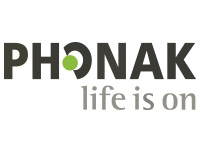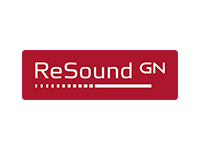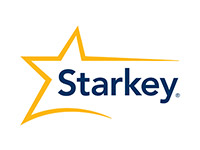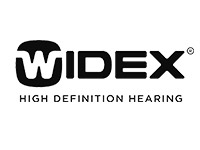
- Dec 5, 2023
Understanding Body Language In Meetings
Reading Between The Lines: Understanding Body Language In Meetings
Words alone cannot convey the full impact of your message. Your gestures, postures, and facial expressions can ignite understanding, build connections, and inspire confidence.
This is the power of body language in meetings.
Body language plays a significant role during meetings as it conveys non-verbal messages and influences how others perceive you. Here are some reasons why body language is essential in meetings:
- Non-verbal communication: Body language is a non-verbal communication that complements and enhances the spoken word.
- Demonstrating confidence: Confident body language contributes to how others perceive you. Standing tall, using assertive postures, and speaking clearly can create a positive impression.
- Enhancing understanding: Body language can strengthen understanding and clarity in meetings using appropriate gestures or visual cues.
- Influencing perception: How you carry yourself can shape how others perceive your credibility, competence, and leadership skills.
Body language is a powerful tool that can impact how others interpret your messages and presence in a meeting. Awareness and using effective body language can enhance communication and contribute to a positive and productive meeting environment.
Contrariwise, being mindful of other people's body language can also be advantageous! By doing so, you can gauge how to approach people and predict the outcome of your meeting.
It's a worthy skill to master!
Understanding different types of body language and what they convey
Body language encompasses a wide range of non-verbal cues. Each can convey different messages. Here are common body languages you may want to look out for in your meetings:
1 Facial Expressions
This is a powerful indicator of emotion. A smile conveys happiness, while a furrowed brow expresses frustration or concern. Some facial expressions may be involuntary responses. Watch out for the different facial expressions made by your peers!
2 Eye Contact
This is crucial in communication. To tell that a person is genuinely interested and shows confidence, one must sustain eye contact.
Avoiding eye contact can indicate shyness, discomfort, or lack of interest. On the other hand, prolonged staring can be perceived as aggression.
3 Posture and Body Positions
Open and relaxed postures convey confidence and approachability. Leaning forward slightly can indicate interest and attentiveness.
During meetings, you should avoid closed postures such as crossed arms or legs, which can indicate defensiveness, discomfort, or disagreement.
4 Gestures and Movement
Using hand gestures is a great way to complement verbal communication.
Expansive gestures while speaking conveys enthusiasm and engagement. Nodding while listening to your peers indicate agreement and willingness.
Fidgeting and restless movements can suggest nervousness or impatience.
5 Proximity
Maintaining proper proximity and personal space is essential. The distance between individuals can reveal their comfort level and the nature of their relationship. Maintaining appropriate distance indicates respect for personal boundaries.
Body language cues will vary depending on cultural and individual differences. Context and multiple cues should be considered when interpreting body language. It's best to observe and consider the different situations and cultural contexts to perceive your non-verbal communication better.
The 5 Cs of body language
The Nonverbal Advantage by Carol Kinsey Goman tackles the five C's of body language and how these non-verbal cues are important, especially as first impressions.
Although first impressions are not the most reliable means of learning about a person, they can be a helpful tool in honing one's ability to read a person through body language. It is crucial to filter your first impressions through the five Cs.
1 Context
This refers to the circumstance or situation in which the body language is observed. The meaning of certain body language cues can vary depending on the context. It's essential to consider the broader context to interpret body language accurately.
2 Clusters
Nonverbal cues can occur in what we call a gesture cluster. This group of movements, postures, and actions reinforces a common point.
We all know a single gesture can have several meanings or mean nothing. However, if you couple that single gesture with other signs, the purpose becomes clear.
Clusters provide a comprehensive understanding of someone's non-verbal communication.
3 Congruence
Congruence implies that body language should be consistent with verbal communication. Someone's body language should align with their words because it enhances their credibility and authenticity.
Incongruence between verbal and non-verbal cues can indicate deception, discomfort, or lack of confidence.
4 Consistency
Body language patterns and signals should be consistent over time. Observing someone's body language consistently during a conversation is great practice for measuring consistency.
By doing so, you can identify patterns and better understand their attitudes, emotions, and intentions.
5 Cultural Awareness
Lastly, cultural awareness highlights the significance of considering cultural differences and norms when interpreting body language.
Different cultures have unique body language cues and interpretations. Being aware of cultural variations helps avoid misinterpretations and fosters effective cross-cultural communication.
The 5 C's of body language provides a framework for understanding the complexities of non-verbal communication. Considering these tips, you can enhance your ability to accurately interpret and respond to body language.

Where to sit at a meeting
A person with a hearing loss may already have strategies for where they sit at meetings.
Usually the best position to sit is across from the leader or 'gate-keeper' or person you want to influence at the meeting so you can hear well and pick up visual cues read lips etc.
If there is a noisy object like a fan, air conditioner or projector you may want to avoid being too close to that. Background noise like an open door can really cause issues.
There are various position to sit depending on the context of the meeting and the influence you would like.
In a confrontational meeting the best position is opposite the person you expect confrontation or an opposing view from.
The term right-hand-man refers to someone you are close to or are aligned to. So sitting to the right of someone you consider powerful and an ally can be useful.
Also sitting next to someone you wish to network with can be a benefit.
It doesn't hurt to survey the room early and pick a location that suits.
Refer to the article on Where to sit at a meeting.
Study: Only 20% right at predicting thoughts and feelings
University of Chicago professor Nicholas Epley has found that when your dealing with strangers, you correctly detect their thoughts and feelings only 20% of the time.
Author Eric Barker Plays well with others pg 25 Harper One. 2022
Body Language and being Hearing Impaired
Comparing Body Language interpreting skills between hearing and non-hearing people
Finally some good news for people with a hearing loss-:
Deaf people who use sign language are quicker at recognizing and interpreting body language than hearing non-signers, according to new research from investigators at UC Davis and UC Irvine.
Deaf sign language users pick up faster on body language https://www.sciencedaily.com/releases/2012/01/120112142243.htm
Periferal Vision
Horwitz, an ASL and English interpreter, says deaf and hard of hearing people are very aware of what's in their peripheral vision: "Sometimes they're not looking at you, but can catch everything that I am interpreting or signing to them. They have such strong peripheral vision, they catch the smaller, more subtle nuances, better than hearing people who can rely on the audible cues that we give one another."
Sign language experts on the nonverbal cues you're missing in meetings https://www.fastcompany.com/90265668/sign-language-experts-on-the-nonverbal-cues-youre-missing-in-meetings
References and Sources
Where to sit at a meeting
https://extraordinaryteam.com/where-to-sit-at-a-meeting/
Eric Barker
Plays well with others pg 25 Harper One. 2022
Deaf sign language users pick up faster on body language
https://www.sciencedaily.com/releases/2012/01/120112142243.htm
Sign language experts on the nonverbal cues you're missing in meetings
https://www.fastcompany.com/90265668/sign-language-experts-on-the-nonverbal-cues-youre-missing-in-meetings
Nonverbal Cues to Help You in Meetings
https://myhearingcenters.com/blog/nonverbal-cues-to-help-you-in-meetings/
Tags
Other Articles
21/11/2023 Slim Hearing Aids »
18/06/2023 Noise and non-hearing health »
12/06/2023 Using Conversation Visual Cues »
03/01/2023 A beginner's guide to Bluetooth »
08/12/2022 The Stigma of Wearing Hearing Aids »
16/08/2022 How to Become a Better Listener »
13/05/2022 Negativity Bias »
22/04/2022 Tinnitus who has it and why? »
14/10/2021 Lost or Damaged Hearing Aids »
20/10/2020 Deep Listening »
08/10/2020 Over-the-Counter hearing aids »
08/09/2020 Hear Better than Anyone in the Room »
12/08/2020 Sound Wavelength and Loudness »
03/03/2020 Localisation - identifying where sound comes from »
10/02/2020 Sudden Deafness »
17/12/2019 Hearing Better in Meetings »
09/12/2019 Can meditation improve hearing? »
18/11/2019 Over 50s »
30/10/2019 Wireless Hearing Aids »
07/10/2019 Cleaning and Maintaining Hearing Aids »
09/04/2019 What is the process for buying a hearing aid? »
06/02/2019 One Hearing Aid or Two? »
31/01/2019 Hearing Aid Cost Breakthrough 2019 »
29/08/2017 Hearing Aid Future is Here »
09/06/2017 ABC Checkout Warns on Hearing Aid Purchases »
13/04/2017 Listening better in a noisy world »
21/02/2017 Hearing augmentation devices - IQBuds »
08/12/2016 Childrens Hearing Linked to Social Disadvantage »
24/10/2016 Hearing with Less Effort »
25/01/2016 Seven Thousand Ways to Listen »
01/10/2015 Hearing Loss and Dementia »
06/03/2015 Myth: Hearing Aids do not work »
03/12/2014 ABC Background Briefing Hearing Aids »
20/11/2014 Buying a hearing aid for your parents »
17/01/2014 Is Bluetooth making costly Hearing Aids redundant? »
13/01/2014 Research Online and Save »
08/10/2013 Phonak Q10 Hearing Aid Review »
13/05/2013 Is anyone listening to you »
12/04/2013 Hearing Aid Repairs »
05/04/2013 Will I benefit from a hearing aid? »
18/03/2013 Compare Hearing Aids »
13/03/2013 Audiologists are now mobile »
08/03/2013 Hearing and your work prospects »
18/12/2012 Hearing and your baby »
13/12/2012 Occlusion effect when wearing hearing aids »
24/10/2012 Hearing Aid Brands in Australia »
18/10/2012 ReSound Verso »
03/10/2012 Waterproof Hearing Aids »
28/05/2012 Music to your ears »
19/02/2012 Donate hearing aids that are no longer needed »
31/01/2012 An Invisible Hearing Aid »
26/11/2011 Who to see for sudden hearing loss »
03/11/2011 Restore your hearing or use aids »
13/09/2011 Not wearing your hearing aids »
29/08/2011 Audiologists Career Path »
26/08/2011 Bluetooth Hearing Aids »
Hearing Aid Referral
Get the best price and care from our network of professionals
FREE/no obligation
- Great Care
- Major Brands
Hearing Aid Brands in Australia









